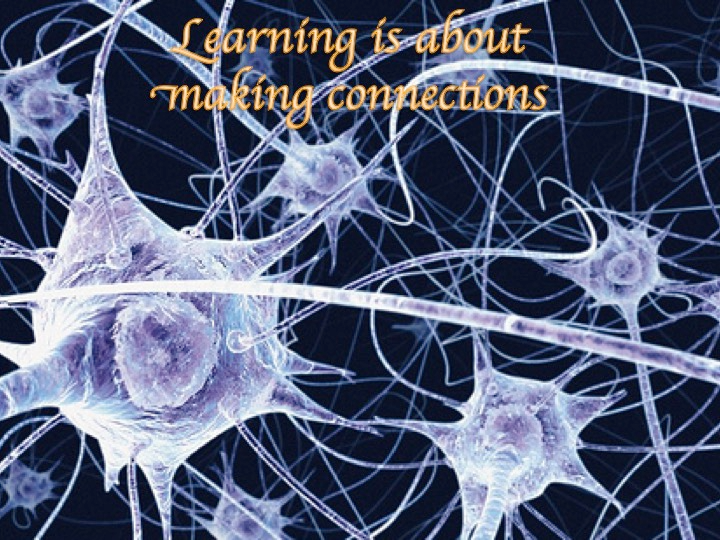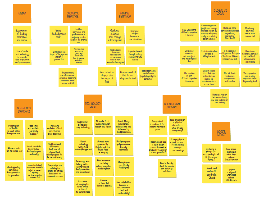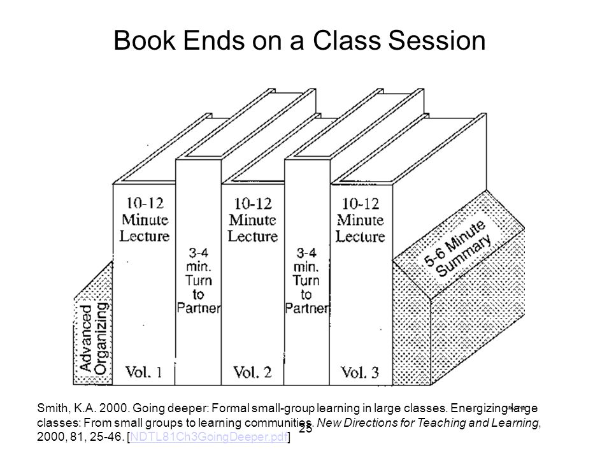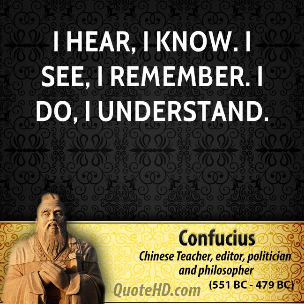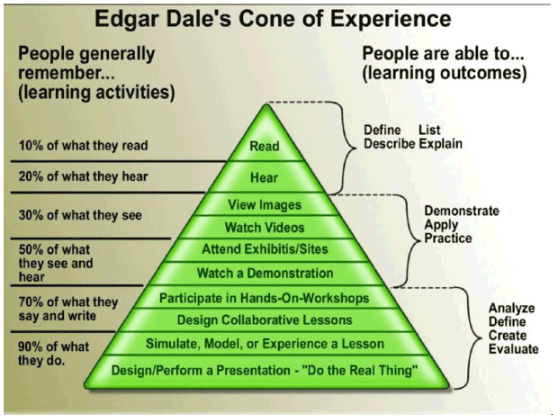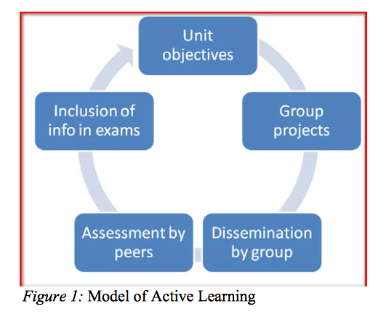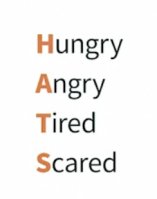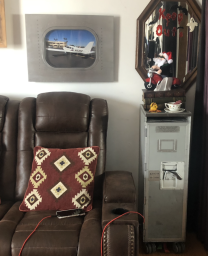
There is no such thing as effective teaching in the absence of learning - teaching without learning is just talking
Why I value diversity
Globalization and immigration patterns have increased and will continue to increase the likelihood that we will need to work with colleagues and clients with different identities and lived experience. To be effective leaders, we need to know how to work well with people who are different from us. We must also be aware of our own biases and know how to mitigate them. Effective leaders manage and participate in teams. A team made up of people with diverse viewpoints can be more innovative and effective than a team of people who all think alike, if its leader knows how to cultivate and manage a diversity of ideas.
To have a clear understanding of one's work on society, one must, among other things, understand how injustice and discrimination have shaped society.
I strive to be engaged, civic-minded, and guided by a sense of personal responsibility to have a positive impact on society. I believe that with a social justice orientation I can positively impact society by identifying discrimination, reversing underrepresentation, and challenging the status quo in the fields in which I lead.
My mission in life, with respect to valuing diversity, is to increase awareness, allyship, and action wherever I go. I strive to foster engagement with, and understanding of, critical issues, including bias, power, and privilege. I shall always try to actively counter racism, sexism, classism, heteronormativity, ableism, and other forms of institutionalized oppression. I shall always try to offer space for dialogue to serve as an ally to others on the path to a socially just and equitable society.
Microsoft Word document [42.9 KB]
Microsoft Word document [43.5 KB]
Microsoft Word document [61.5 KB]
Microsoft Word document [126.5 KB]
Microsoft Word document [84.1 KB]
Adobe Acrobat document [32.4 KB]
Microsoft Word document [18.8 KB]
Adobe Acrobat document [38.5 KB]
Adobe Acrobat document [170.9 KB]
Adobe Acrobat document [31.7 KB]
Microsoft Word document [228.3 KB]
Microsoft Word document [521.1 KB]
Microsoft Word document [78.7 KB]
Microsoft Word document [108.9 KB]
Microsoft Word document [247.3 KB]
Adobe Acrobat document [152.9 KB]
My Teaching Style
- I believe in learner-centered teaching (LCT). The one who does the work does the learning. If students are to learn, then it must be their brains that do the work. I, the teacher, must be the designer and the facilitator of that work. The use of lecture in LCT is limited to talking to students about things they cannot learn on their own.
- I believe that human survival depends on humans working together.
Learning is the ability to use information after significant periods of disuse and it is the ability to use the information to solve problems that arise in contexts different (if only slightly) from the context in which the information was originally taught - Bjork, 1994
- I believe in the power of authentic learning.
Authentic learning is a pedagogical approach that allows students to explore, discuss, and meaningfully construct concepts and relationships in contexts that involve real-world problems and projects that are relevant to the learner - Donovan, Bransford, & Pellegrino, 1999
It embodies teamwork and collaboration, technology, and the professional presentation of processes and solutions.
For employers, the most important skills in new hires include teamwork, critical thinking/reasoning, assembling/organizing information, and innovative thinking/creativity - Hart, 2006
Authentic learning helps develop these very skills!
Expert thinking and complex communication skills will propel you in your career.
Expert thinking involves the ability to identify and solve problems for which there is no routine solution. This requires pattern recognition and metacognition.
Complex communication involves persuading, explaining, negotiating, gaining trust, and building understanding.
- I believe students should take responsibillity for their work.
Authentic assessment is an evaluation process that involves multiple forms of performance measurement, reflecting the student's learning, achievement, motivation, and attitudes on instructionally relevant activities. E.g. performance assessment, portfolios, self-assessment
- I believe in the concept of MODEL - PRACTICE - FEEDBACK
- I believe in authentic assessment techniques:
measurement taking
oral report
written report
debate
portfolio
lab report
science notebook/journal
student talk
active listening
concept map - like Xmind
open-ended questions
lab performance
interview
skills/behaviors check list
self-evaluation
peer evaluation
outside professional evaluation
use of industry standards
product production - objects, movies, art forms, scripts, advertisements etc
public presentation at professional meetings, conferences
- I believe in being a facilitator of learning.
In business and industry, a facilitator is a person who runs meetings, oversees committees, or gets others to complete a task or reach a goal.
In education, a facilitator is a person who supports students in learning their course material by providing an environment for engagement; a set of resources such as questions, articles, research findings, problems, and/or cases to engage with; and using assessment tools hat provide the learner with meaningful feedback. Facilitation is a learned skill.
- I believe in giving specific, meaningful, helpful, frequent feedback.
- I believe in encouraging a growth mindset in my students, as opposed to a fixed mindset.
Fixed Mindset: students believe that intelligence is a fixed trait - that some people have it and others do not - and that their intelligence is reflected in their performance - Dweck, 2006
Growth Mindset: students value hard work, learning, and challenges while seeing failure as something to learn from. Believe brain is malleable and intelligence and abilities can be enhanced through hard work and practice.
|
|
FIXED MINDSET
|
GROWTH MINDSET |
|
Self-image |
Students want to look smart by taking on only easy tasks, trying to make others look dumb, and/or discounting others’ achievements
|
Students’ self-image is not tied to their abilities because they see their abilities as something that can be further developed and improved. Their desire to learn is paramount.
|
|
Challenges |
Students tend to stick to what they can do well. Other challenges are to be avoided because they present a risk to their self-image should they fail.
|
Challenge is embraced because students believe they will come out stronger for facing it. They believe they will discover valuable information by engaging in the effort.
|
|
Obstacles |
Obstacles are defined as things that are external or beyond one’s control and therefore harder to avoid. Students often make excuses or avoid them by being absent.
|
Because their self-image is not tied to their success or how they look to others, students see failure as an opportunity to learn. So, in a sense, they win either way. An obstacle is just one more thing on the road to learning and improving.
|
|
Effort |
Students’ view of effort is that it is unpleasant and does not pay off in any positive gains; therefore, it is to be avoided. Their perception of what “great effort” is can fall quite short of what is actually required to succeed academically. This may also contribute to their view of effort as futile.
|
Students see effort as necessary if growth and eventual mastery is to be gained. It is viewed as a natural part of the learning process. |
|
Criticism |
Any criticism of students’ abilities is seen as criticism of them at a personal level. Useful criticism is usually ignored or, even worse, seen as an insult. This personal response to criticism leads to less and less chance of improvement because they are not open to using any of the feedback that could help them improve.
|
Although these students are not any more thrilled about hearing negative criticism than anyone else, they know it is not personal and that it is meant to help them grow and improve, which they believe they can do. They also see the criticism as directed only at their current level of abilities, which they see as changing with time and effort.
|
|
Success of others |
Students see others’ success as making them look bad. They may try to convince their peers that others’ successes were due to luck or some objectionable actions. They may even try to distract from the successes of others by bringing up their own unrelated personal successes or previous failures of those persons currently successful.
|
The success of others is seen as inspiration and information that they can learn from. |
Carol Dweck - TED Talk - Growth Mindset
Dear Student,
1. I shall praise your effort and strategies, not your intelligence.
2. I shall tell you that you can grow your own brain.
3. When you fail, I shall focus feedback on having you increase your effort and use improved strategies.
4. I shall help you understand that your ability to face a challenge is not about your actual skills or abilities; it's about the mindset you bring to a challenge.
5. I will reinforce that current performance reflects only your current skills and efforts, not your intelligence or worth.
6. I will offer evidence that your fixed beliefs are in error, and I will teach you the study skills and learning skills you need to succeed in the course.
Sincerely,
Your facilitator of learning, Sarah
- I believe in working towards meeting the following standards:
1. Establish a safe classroom.
2. Strive to make the work students do be of value to them.
3. Provide evidence of students' success.
4. Establish a caring classroom.
5. Use best practices.
- I believe in sharing control and giving choices. First, by providing choices in the kinds of policies and procedures that will be used in the course, and second, by giving students more control over what they learn, how they learn it, and how they demonstrate that they have learned. It is human nature to want to be in control. This will be accomplished through small group discussion to build this community of learners. The rationale for this is as follows:
1. It is the students learning, not mine, so they should have a big say in it.
2. Sharing creates ownership for the students in their learning experience.
3. Sharing power creates community. It moves the classroom away from the teacher-versus-students model.
4. Sharing shifts responsibility to the students, where it belongs. They will be responsible for their own learning the rest of their lives and they need to practice that now.
Groups will be formed in 3 ways:
1. informal groups: temporary and often complete their work in a single class period
2. formal groups: to complete a specific task and may work together over several class periods
3. study teams: often last the entire semester and serve a variety of learning needs
- I believe that pedagogies that take the social nature of learning seriously tend to be more successful. Students give witness that when they have opportunities to discuss, critique, and relate the material to their own lives, it becomes more meaningful and memorable, more connected to their understanding of the world - Brookfield and Preskill, 2005
- I believe in the following rationales for the use of discussion:
1. Not knowing how to express your ideas in the workplace can be career threatening.
2. Students need to learn that their ideas, suggestions, questions, and concerns will not be heard in the world of work if they wait to be called on. Getting the attention of leadership at any level depends on learning to take the initiative in offering their ideas, suggestions, and concerns.
3. Students need to understand that one of the most important aspects of college learning is hearing the different views of their peers. It is a major way they develop and refine their thinking.
4. Research clearly shows that learning is enhanced by discussion. Students learn more and remember more from their discussion than from lecture.
5. The single most important skill students need to be successull in the workplace is the ability to talk and listen to people.
6. Most work in the real world is done in teams and groups. Learning how to get along and collaborate in small and large discussion groups is great practice for this, especially if a student is not naturally outgoing or prefers to work alone.
7. Discussion develops critical thinking skills. It is vital to be able to practice the thinking skills of analysis, synthesis, and evaluation in a safe environment, which a classroom discussion affords. It is ok to make mistakes in the classroom, not in the real world.
8. Challenging or affirming others is important in effective communication. Discussion is a chance to practice the skills of disagreement, confrontation, and affirmation - all vital to our students' longterm success.
9. Discussion allows students the opportunity to clarify their thinking and organize their thoughts.
- I believe in the following discussion methods:
1. Guided discussions: teacher poses questions designed to lead the students toward a particular outcome. Lot of structure and takes thoughtful planning to execute well.
2. Debate: some instruction here
3. Role play: many forms - students move outside themselves, shedding some insecurities
After the discussion:
1. reflection papers
2. summaries
3. fact or idea sheet
4. mind map - click here or here for examples
Assessing discussion
1. wiki site
2. papers
3. presentations
- I believe that our senses work together, not in isolation, as was once thought, and when multiple senses are used in instruction, better encoding of information takes place, thus allowing for improved recall of the information.
- I believe that today's learners are digital natives. In other words, they prefer:
1. receiving information quickly from multiple multimedia sources.
2. parallel processing and multitasking.
3. processing pictures, sounds, and video before text.
4. random access to hyperlinked multimedia information
5. interacting and networking simultaneously with many others.
6. learning 'just-in-time'.
7. instant gratification and instant rewards.
8. learning that is relevant, instantly useful, and fun.
- Jukes & Dosa, 2003
- I believe that the human cognitive process involves actively creating linkages among concepts, skill elements, people, and experiences. For the individual learner, this will be about making meaning by establishing and reworking patterns, relationships, and connections. New biological research reveals that connection-making is the core of both mental activity and brain development. - Ewell, 1997
- I believe in helping my students discover the patterns that exist within my own content areas so that they can see how course knowledge is interconnected. Patterning processes include similarity and difference, comparison and contrast, cause and effect, hierarchy, alphabetical order, students' own language, etc. There are patterns in all knowledge and the students job is to look for them constantly. Most students have developed excellent abilities to recognize patterns in many aspects of their lives, but often do not transfer them to the classroom.
- I believe in Deliberate Practice because it takes intense concentration, requires deep motivation, and is often self-motivated. Introverts prefer to work independently and solitude can be a catalyst to innovation. Sometimes, group brainstorming fails because of (1) social loafing, where in a group some individuals tend to sit back and let others do the work; (2) production blocking, where only one person can talk or produce an idea at once, while the other group members are forced to sit passively; and (3) evaluation apprehension, meaning the fear of looking stupid in front of one's peers. - Susan Cain
Six traits recommended for better retention of information
(Made to Stick: Why Some Ideas Survive and Others Die, by Chip & Dan Heath):
1. Keep ideas SIMPLE
2. Make things UNEXPECTED – keep your students guessing as to what might be coming next
3. Provide CONCRETE examples – stray away from speaking in the abstract
4. Make sure the information is CREDIBLE – know your sources
5. Feed off of EMOTION – emotions facilitate caring about something; in this case, keep your students feeling through your lessons and they will more likely remember them
6. Share a STORY – storytelling is one effective strategy to bring your information to life and provide it meaning and relevance for learners
For more information about these six traits for better retention of information, please visit
http://heathbrothers.com/download/mts-teaching-that-sticks.pdf
Adobe Acrobat document [1.3 MB]
Adobe Acrobat document [36.2 KB]
Adobe Acrobat document [22.0 KB]
Adobe Acrobat document [12.2 KB]
Adobe Acrobat document [158.1 KB]
Microsoft Power Point presentation [18.6 MB]
Critical Incident Questionnaire - Stephen Brookfield
Reading Circles get students to do the reading - Jane Gee
Ten strategies for getting students to take responsibility for their learning - Sara Jane Coffman
Gaining student compliance with pre-class assignments
- the barriers
- the payoff - making the assignment worthwhile
1. some scary stats:
a. 20% of students do not buy textbooks
b. 20-30% of students comply with course reading assignments
c. 50% of students at 4-year institutions lack the skills to perform complex literacy tasks
2. why don't our students read?
a. students believe the instructor will present important information during class - Doyle, 2008
b. students feel too overwhelmed when they cannot keep up with the reading
c. students lack the necessary prior knowledge to benefit fully from the reading (jargon)
d. students fail to relate the relevancy of the reading to the course
e. students do not recognize a sufficient payoff for reading the assignments
f. students think that reading before the exam is sufficient
3. why students struggle understanding what they read
a. students skim for information
b. students often multitask while reading (social media, watch TV, texting, surfing internet)
c. students do not know how to organize the information from the readings given the structure of textbooks and scholarly articles
d. students struggle with understanding the vocabulary
3. are you guilty too?
a. not using the reading in class
b. using lectures to summarize the reading for students
c. having unrealistic expectations about students' reading abilities
d. failing to make reading relevant for students
e. failing to scaffold difficulty and content of reading
- Critical Reading Strategies
a. Marginal notes/nutshell passages (forbid the highlighter! - write out why you wanted to highlight/underline something - why is the passage important - summarize key points - ask questions in a conversational manner with the author - document criticisms - express reactions and responses to the text)
b. Focused reading
c. SEEI (State = write the main concept/idea/definition in a single sentence, but no more than two sentences; Elaborate = in other words.... write one or two paragraphs in your own words about the main concepts/points of the reading with detailed explanation - this is not a summary; Examplify = provide an example or two of how the concepts can be applied; Illustrate = provide an analogy or draw a picture to illustrate the concept(s) from the reading using pictorial depiction, comparison, or metaphor)
d. Play the believing and doubting game
e. Reading logs (students write regularly about what they are reading, but, they choose what they want to say - students connect the readings to their own personal experiences, argue with the text, disagree, analyze it, or even evaluate it - personal reflections and musings are strongly encouraged)
f. Reading circles (discussion director - summarizer - illustrator - literary luminary - connector - questioner)
g. Graphic organizers/concept maps
h. low stakes quizzing for formative assessment purposes
- take home points
a. preview the assigned reading
b. arouse student interest prior to reading (interest-arousing pretests, exploratory writing task about a problem introduced in the reading)
c. design a focused, informal writing-to-learn task based on the reading (newspaper editorial column, journal)
d. do not repeat the reading during lecture
e. have students write something in response to the text with a payoff?
f. monitor compliance
11 strategies for getting students to read what's assigned - Faculty Focus
CHEATING
- three approaches:
1. Virtues approach (honor codes, discussions, tutorials)
2. Policing approach (Turnitin, Safe Assign, Google)
3. Prevention approach (course design, assignment creation)
Dr. Battaglia's 12 course design strategies to promote greater academic integrity
1. Student generated course code of conduct
Ask students how THEY will create a community of integrity in the course during the first day of class and have them write the class code working in groups of 3-4 and require the groups to collaborate on producing the final document using google docs.
Have each student sign the final document.
2. Promote learning over cheating
Provide early success opportunities in the course.
Provide frequent opportunities to demonstrate learning.
Provide choices in how students demonstrate learning.
Provide effort-focused and achievement-focused timely and relevant feedback.
3. Create authentic learning tasks and assignments
Focus assignment on distinctive, individual, non-duplicative tasks or on each student's individual learning interests/goals that require integration of material.
Ask specific questions.
Require specific analyses.
4. Design for active learning
Require students to apply key course concepts to a relevant, meaningful problem, situation, career-oriented scenario.
5. Use collaborative learning
Allow students to collaborate on some designated assignments while also incorporating peer and self-assessments.
6. Low stakes vs. high stakes assessments
use multiple low-stakes assessments rather than a few high-stake assessments.
7. Scaffolding
Design assignments to be completed in stages and/or assign a "course portfolio".
8. Emphasize process over product
Focus attention on student demonstration of the learning process as much or more than their ability to generate the right answer (product).
9. Timed online quizzes/exams
Limit the time allowed to complete online assignments.
10. Incorporate self-assessments
Ask students to post self-reflections about what they learned during the completion of an assignment in a course blog or journal entry.
11. Incorporate presentations
Provide opportunities throughout the course for students to demonstrate their knowledge and understanding of course material through oral presentations that include question and answer sessions.
12. Give open book exams
Use the textbook as a reference source for completing application-based exam questions.
Affinity Diagram
Adobe Acrobat document [30.0 KB]
Adobe Acrobat document [154.5 KB]
Adobe Acrobat document [375.9 KB]
Adobe Acrobat document [1.0 MB]
Adobe Acrobat document [242.0 KB]
Can Graffiti be Used to Facilitate Learning?
Homework as Assessment - Tomorrow's Teaching and Learning
Teaching Millennial Students - Washington State University
Teaching the Millennials - Jeff Nevid
The Mindset List - 2019 - Beloit College
Strategies for effective lecturing - Dr. Battaglia, ERAU, 2016
- human polling - letters on wall A-E around room - show multiple choice questions - people walk over to letter they chose
- Attention span - no more than 7 minute chunks
- know your audience (names, background knowledge, level of interest in course, attention span)
- common lecturing pitfalls:
a. talking faster, making it harder for your audience to keep up
b. covering material in less detail, focusing only on the surface-level information
c. limiting opportunities for questions or discussion, because questions and discussion are seen as a distraction or hindrance to your goal
- plan, plan, plan:
a. prepare a cognitive map or an outline for your lecture, including only 3-4 main ideas to present (need to know vs. want to know)
b. show the relationship between ides of the day, learning objectives, and overall course content
c. pacing
d. conversational tone
e. provide concrete, meaningful examples
- summarize and engage
- the choice is yours
- finish strong - when closing:
a. provide an explicit statement of the relationship between the 3-4 main points focused on during class with the day's learning objectives and overall course goals
b. ask students to complete a 3-5 question multile-choice quiz before the end of class to assess their understanding of the lesson's main points (or a variation)
c. leave them with a thought-provoking question to ponder as an introduction to the next class meeting's topic
- DO NOT FORGET....
a. current memory research indicates that most learning occurs OUTSIDE the classroom when students read, reflect, write or experience the information given in lecture
b. fill your lectures with analogies, metaphors, and examples that are real world so they can connect to the students' backgrounds
c. the brain is an analog processor, meaning, it works by analogy and metaphor. It relates whole concepts to one another and looks for similarities, differences, or relationships between them. It does not assemble thoughts and feelings from bits of data - Sylwester, 1999
d. write your test questions the same day you give the lecture to increase greater alignment of the test questions with class content
Adobe Acrobat document [1.3 MB]
Getting Started with Active Learning - Dr. Battaglia, ERAU, 2016
- benefits of active learning - student learning increases when:
a. you introduce student activity into lecture
b. you use strategies that promote student engagement (collaborative learning, cooperative learning, problem-based learning)
- active learning must have assessment and reflection
- background knowledge probe
a. classroom assessment technique (CAT)
b. designed to help instructors determine most effective starting point for a given lesson and most appropriate level at which to begin instruction
c. provides baseline data for important concepts that will subsequently be developed through a number of future lessons
d. probes can be used as early as the first day of class in classes of any size before introducing a new concept, topic in the course syllabus, etc.
- think-pair-share
- numbered heads together:
a. each member of the team is assigned a number
b. team members discuss posed questions, solve problems, participate in a team activity, etc
c. instructor calls out a number, designating only students with that number to act as the group spokesperson
d. promotes individual accountability when participating in collaborative learning activities
- wordle
- quizlet
- 10 methods of participation at any time:
1. open discussion: ask a question and open it up to the entire group without any further structuring - you can limit the length of the discussion by prefacing the question with "i'd like to ask 4 or 5 students to share...."
2. response cards: pass out index cards and request anonymous answers to your questions - you can then pass the cards around the group for further discussion
3. polling: design a short survey that is filled out and tallied on the spot, or poll students verbally - instructional technology tools such as clickers and Poll Everywhere could also be used
4. subgroup discussion: break students into subgroups or 3 or more to share and record their information - use subgroup discussions when you have sufficient time to process questions and issues or in large lecture classes
5. learning partners: ask students to work on a task or discuss key questions with the students seated next to them - when time is limited and subgroup discussions are not optimal, learning partners work well, and provides students with supportive relationships among their peers
6. whips: go around the group and obtain short responses to key questions, often times using sentence stems for them to use to complete the statement - request that students provide a different contribution to the sentence stem to avoid repetition
7. panels: invite a small number of students to present their views in front of the entire class - use panels when time permits to have a focused, serious response to your questions - rotate panelists to increase participation
8. fishbowl: ask a portion of the class to form a discussion circle, and have another group of students form a listening circle around them - exchange students from the listening circle to the discussion circle to add to the richness of the discussion
9. games: use a fun exercise or a quiz show - Jeopardy or Family Feud - to glean students' ideas, knowledge or skill - game-based learning can include video games as well as board games and card games
10. calling on the next speaker: ask students to raise their hands when they want to share their views and request that the present speaker call on the next speaker - this technique works well when there is a lot of interest in the discussion or activity and promotes peer-to-peer interaction
- application card: CAT - after students learn about an important principle, generalization, theory, or procedure, instructor asks them to write down at least one possible, real-world application for what they just learned on an index card - allows students to see the potential relevance of what they are learning - applications must be novel and fresh (not ones they have read in the text or learned in class)
Classroom Assessment Technique Examples - Angelo and Cross
Making active learning work - University of Minnesota
Active Learning for the College Classoom - Cal State
Common active learning mistakes - Tomorrow's Teaching and Learning
Applying Dale's cone of experience to increase learning and retention
Dale's Cone of Experience and its impact on effective teaching
Microsoft Power Point presentation [572.5 KB]
Microsoft Word document [35.3 KB]
Adobe Acrobat document [570.3 KB]
Microsoft Word document [29.6 KB]
Adobe Acrobat document [121.7 KB]
ONLINE TEACHING STRATEGIES
Best Practices in Online Teaching Strategies
By Hanover Research Council – 2009
Online learning must involve a mixture of course design issues and pedagogical issues and must offer group activities, structure, stimuli, cajoling by tutors and peers, and a purpose or a reason to go online.
Principles of Effective Online Pedagogy – Bill Pelz – 2004
- Let students do (most of) the work – the more quality time students spend engaged in content, the more of that content they learn (student led discussions – students find and discuss web resources – students help each other learn (peer assistance) – students grade their own homework assignments - case study analysis)
- Interactivity is the heart and soul of effective asynchronous learning (interact with one another, professor, text, Internet, entire class, small groups, partners, etc. with problems to solve, case studies, lab activities, etc.)
- Strive for presence –
a. Social presence – personal characteristics into discussion
i.Affective – expression of emotion, feelings, mood
ii.Interactive – evidence of reading, attending, understanding, thinking about others’ responses
iii.Cohesive – responses build and sustain “belongingness”
b. Cognitive presence – by factual, conceptual, and theoretical knowledge in the discussion – value depends on source, clarity, accuracy, and comprehensiveness
c. Teaching presence – facilitation and direction of cognitive and social process by
i.Facilitating discussion
ii.Direct instruction
Checklist for Online Interactive Learning (COIL)
- Student behaviors meet criterion
- Faculty-Student Interactions
- Technology support
- Learning environment
Characteristics of online teaching (VOCAL)
Visible – personal and professional instructor info, timely feedback, regular updates and postings, mass and personal emails
Organized – self-assessment of successful online student, assignments and due dates up front, netiquette, different formats for online resources, use capabilities of technology
Compassionate – permission to communicate with professor privately, discussion forums and ice-breakers
Analytical – small and more frequent assignments, course feedback, clear expectations
Leader-by-example – instructor sets tone, online communication and feedback
Interactivity in online instruction
- Group problem-solving and collaborative tasks
- Problem-based learning
- Discussion
- Case-based strategies
- Simulations or role-play
- Student-generated content
- Coaching or mentoring
- Guided learning
- Exploratory or discovery
- Lecturing or teacher-directed activities
- Modeling of the solution process
- Socratic questioning
Effectiveness of online environment depends on:
- Planning and development – selection of wide range of educational technologies and course management tools – starts with development of learning objectives
- Teaching in action
- Student assessment and data evaluation
Park University guidelines for creation of learning objectives:
- Behavior – observable behavioral outcomes – clear, targeted verbs
- Student-centered – explain expectation for student behavior, performance, understanding
- Conditions – specific and target one aspect of understanding
- Standards – measurable and include criteria for student assessment
To promote interactivity:
- Online discussion forums
- Student collaboration on assignments
Constructivist thinking – knowledge is constructed from personal experience
Critical thinking
Higher-order thinking – thinking creatively and critically in a decision making or problem solving matter
Guidelines for online discussion:
- Pose a stimulating question
- Interest-getting and attention-getting questions
- Diagnosing and checking questions
- Recall of specific facts or information questions
- Managerial questions
- Structure and redirect learning questions
- Allow expression of affect questions
- Encourage higher level thought processes questions
- Brainstorm answers to the question
- Compare ideas
- Fuse to the curriculum
Best Practices for Online Learning – Pennsylvania State University World Campus
- Prepare your students for learning online
- Specify course goals, expectations, and policies
- Create a warm and inviting atmosphere to build a learning community
- Promote Active Learning
- Model effective online interaction
- Monitor student progress and encourage lagging students
- Assess students’ messages in online discussions
- Sustain students’ motivation and provide feedback and support
- Encourage students to regulate their own learning
- Understand the impact of multiculturalism
- Deal with conflicts promptly
Active learning instructional strategies include a wide range of activities that share the common element of involving students in DOING things AND thinking about the things they are doing:
- thinking critically or creatively
- speaking with a partner, in a small group, or with entire class
- expressing ideas through writing
- exploring personal attitudes and values
- giving and receiving feedback
- reflecting upon the learning process
Teton Lakota Indians: Tell me and I’ll listen – Show me and I’ll understand – Involve me and I’ll learn
Asian proverb: I hear, and I forget – I see, and I remember – I do, and I understand
Interactive lectures: presentations (relatively brief segments of instructor talk) that provide students with brief opportunities for structured engagement (excellent opportunities for student thinking and responding)
- instructor talks with periodic pauses for structured activities
- as student concentration begins to wane, a short structured in-class activity is assigned
- instructor’s questions require responses
- students’ responses to an instructor’s questions are commonly made by using a clicker
- student-to-student talk is encouraged
- students often work with partners or in groups
- student comprehension during the lecture is assessed directly
- opportunities to correct misunderstandings are periodically provided within the lecture
- high rates of attendance often are reported
Strategies to transform traditional lectures into interactive ones:
- Pause Procedure: instructor pauses for about 2 minutes on 3 occasions in a 50-minute lecture to allow students to work in pairs to discuss and rework their notes
- Think-Pair-Share: provide reading assignment, lecture, video, then poses a single question allowing students to reflect (think), write down their answer, turn to a partner (pair) and share
- ConcepTests: test understanding every 15 minutes by posing a challenging conceptual question or problem posed in multiple choice format
- Personal Response Systems (Clickers): takes up less than 10% of class time but show measurable increases in learning
- Personal Response Cards: 4 colored cards with ABCD on them and students raise them in response to questions having 4 possible answers
- Classroom Assessment Techniques (CATs): generally anonymous, ungraded, brief assessments of student understanding, completed in class. E.g. minute papers, Techno-CATs
- Questioning purposefully: frequent use including (a) instructor questions students, and (b) students question students. (NOTE: wait time should be 3-5 seconds)
- Employing classroom demonstrations: when used skillfully arouse student interest
- Assigning short in-class writings: can use 5 X 8 inch cards. (a) summary-writing microtheme, (b) thesis-support microtheme, (c) data-provided microtheme, and (d) quandary-posing microtheme
- Using brief get-acquainted icebreaker activities and/or subject matter warm-ups: to reduce students feelings of embarrassment in front of strangers
- Having brief “who was this person and why might we care?” student presentations: to allow them to reflect upon the source of information
- Infusing humor into class sessions: joke of the day, cartoons, riddles, humorous mnemonic devices
- Using popular films and video-vignettes to stimulate critical/creative thinking
- Inviting guest speakers
- Connecting course content to current events: weekly “breaking news” items
- Transforming study guides into puzzles: Puzzlemaker and Edhelper and ArmoredPenguin
- Employing “high-interest low-stakes” in-class contests
- Creating classroom versions of television game shows
- Creating haiku assignments: 3 lines – 5-7-5
- Having students prepare “Public Service Announcements”
- Integrating website use and/or creation into course assignments
- Integrating debated into course assignments
- Using case method teaching
- Having students do in-class roles plays
- Using cooperative learning strategies (1. Research and prepare a position, 2. Present and advocate their position, 3. Engage in an open discussion, 4. Reverse perspectives, and 5. Synthesize and integrate the best evidence and reasoning into a joint position)
- Exploring team-based learning course redesign
- Creating field trips (real, simulated, or virtual)
- Using Summative Assessment Strategies
Strategies to incorporate active learning into online teaching – University of South Florida
In active learning, less emphasis is placed on transmitting information (teacher-centered) and more on developing students’ skills (student-centered).
Components of good active learning activities:
- Definite beginning and ending
- Clear purpose or objective
- Complete and understandable directions
- Feedback mechanism
- Description of tool or technology used
Examples of good active learning activities:
- Assessment (tests and quizzes that provide immediate feedback)
- Writings (reflective journals, summaries, essays, critiques)
- Demonstrations with questioning (video clips)
- Games and simulations
- Community building
- Readings, case studies
- Projects (group or individual)
- Study/ support groups
- Problem-solving
- Role play
- Discussions (virtual chat, bulletin board)
- Experiential learning (internships/preceptorships/externships)
- Visual-based instruction (streamed video/CDs)
- Online presentations
- Directed research
University of Wisconsin-La Crosse
Include discussions, case studies, problem-solving exercises, and class-wide projects.
5-Step Model
- Clearly disseminated objectives for each unit
- Distinctive group projects based on learning objectives
- Dissemination of the projects and relation to objectives by group members
- Assessment of project by peers and instructor
- Required inclusion and discussion of group projects and objectives as part of exams
Learning is mostly a matter of reconstituting the already constituted world
|
DEEP LEARNING |
SURFACE LEARNING |
|
Active |
Inert |
|
Utilized ideas: ideas that are connected to the larger framework of meaning that forms our life
|
Inert ideas: ideas that are merely received into the mind without being utilized, or tested, or thrown into fresh combinations |
|
Learning takes place by action of learner |
Rote or passive |
|
Learner is seeking to connect new knowledge to his/her existing body of ideas |
Learner is picking up bits of information for a test or exam |
|
Learner is agent, agent in motion, moving through, using, and shaping the object of learning |
Passive is an oxymoron – learner cannot be passive and learn – learning cannot be done to you |
|
|
Learner regards the object of learning as stationary, inert, a set piece to be observed from just one angle and not to be handled |
|
Students are active movers in the design of their own learning |
Students are afraid to disturb the dust on the inert and unconnected objects of their fleeting attention |
|
Holistic |
Atomistic |
|
Seeks to integrate information and seeks to integrate into her preexisting framework of thought |
Sees information as discrete bits, separate and isolated atoms |
|
Connect new learning with prior knowledge, question new ideas, and compare them with old ones, seek the main point |
Find it difficult to fit ideas into an overall picture |
|
Connected |
Isolated |
|
Practical in that it relates to decisions and beliefs that make a difference to our lives |
Sever objects of learning from their connections with world at large |
|
Cognitive growth: lies not just in knowing more, but in the restructuring that occurs when new knowledge becomes connected with what is already known |
Cognitive near-sightedness: the sign is the meaning, the first appearance is all there is |
|
Integrate information into semantic memory (large, personal, coherent, meaningful framework) |
Episodic memory (relies on discrete, concrete experiences) |
|
Incremental theory |
Entity theory |
|
Signs are cues for analysis and interpretation – they are part, but not all, of what he seeks to understand |
Student does not see past the sign to what the sign means and then sets meaning aside as being irrelevant to his purpose |
|
Believe that effort can increase ability |
Believe ability is fixed |
|
More likely to form learning goals rather than performance goals |
More likely to form performance goals rather than learning goals |
|
Learning goals – seek to get smarter |
Performance goals – seek to look smart |
|
Tend to seek feedback on consequences of actions |
Very act of seeking out feedback would imply a negative evaluation |
|
Mindfulness |
Mindlessness |
|
Mindful approach: 3 characteristics
|
Mindlessness:
|
|
Characteristics are approaches to introducing variation and variety into the objects of thought, of triangulating reality by looking at it from different angles |
|
|
A deep approach to learning, fully realized, makes us mindful in precisely this sense of seeing things from more than one angle, turning them over and taking in what is new about them, coming to see them in a new light and in new categories |
A surface approach, is explicitly mindless in that, standing in one place, we take the surface revealed at a particular angle of light as all there is, and so we make the world two-dimensional, static, and dead |
Adobe Acrobat document [1.5 MB]
Adobe Acrobat document [56.5 KB]
Adobe Acrobat document [2.6 MB]
Adobe Acrobat document [119.7 KB]
Adobe Acrobat document [147.9 KB]
Adobe Acrobat document [379.1 KB]
Contact Me
Sarah Nilsson, J.D., Ph.D., MAS
602 561 8665
You can also fill out my
Get Social with Me
Legal Disclaimer
The information on this website is for EDUCATIONAL purposes only and DOES NOT constitute legal advice.
While the author of this website is an attorney, she is not YOUR attorney, nor are you her client, until you enter into a written agreement with Nilsson Law, PLLC to provide legal services.
In no event shall Sarah Nilsson be liable for any special, indirect, or consequential damages relating to this material, for any use of this website, or for any other hyperlinked website.
Steward of
I endorse the following products
KENNON (sun shields)
